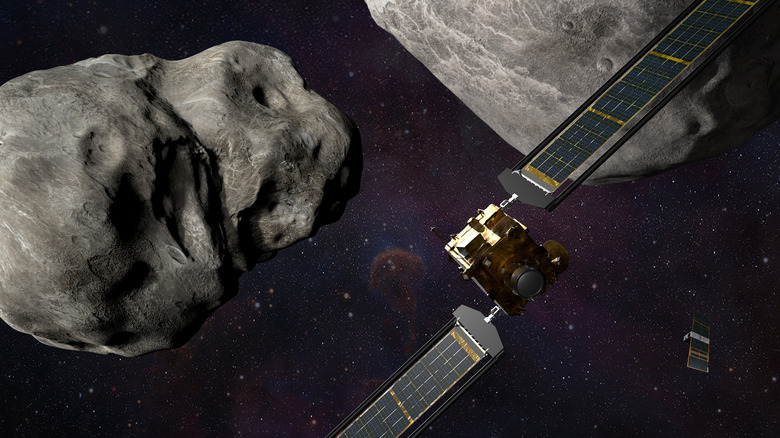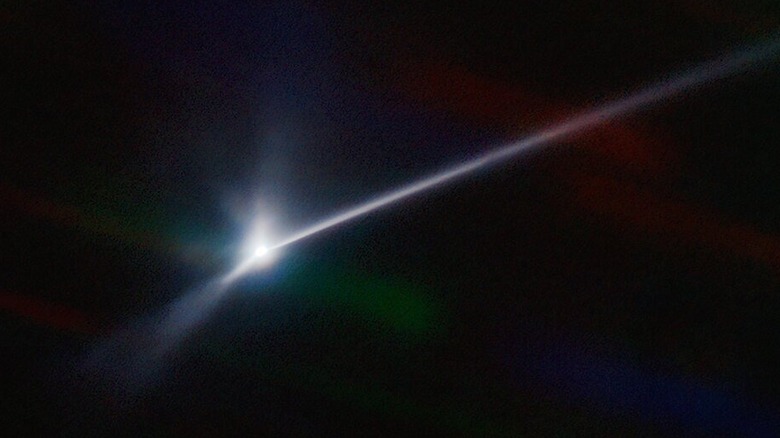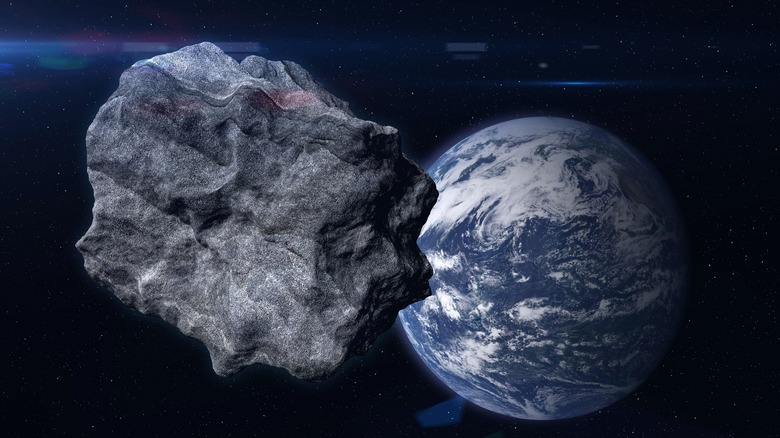NASA's Successful DART Mission Leaves Behind A Stunning Sight
On September 26, 2022, NASA astronauts successfully crashed a spacecraft directly into the asteroid Dimorphos. The Double Asteroid Redirect Test (DART) mission might seem like something out of a science fiction novel, but this task was undertaken in real life and broadcast for the entire world to see. Make no mistake, the Herculean effort to launch the craft at the precise speed and angle required to make an impact was monumental and took many months to pull off. According to NASA, this mission was initially launched in November 2021 with the goal of successfully demonstrating the ability to deflect a celestial object through kinetic impact.
In the aftermath, scientists on Earth can study the effects the impact had on the asteroid, potentially allowing for a repeat demonstration on a grander scale if the need ever arises (in the same way that it continually creeps into science fiction movies). This almost yearlong experiment has enabled NASA researchers to study the behavior of an asteroid after a collision has occurred, and hypothesize about what might happen with other missions to achieve these ends, perhaps in pursuit of a doomsday defense.
An extensive debris trail has formed in the days since impact
The most immediate after-effect of this impact is in the debris trail that has continued to spew from Dimorphos. NOIRLab, which published the image, reports that the asteroid moonlet has developed a tail that spans about 6,000 miles long. This lengthy debris field will give NASA scientists a unique look into the trajectory of the asteroid around the larger body, Didymos, in orbit. Indeed, NASA selected this pair of asteroids because the smaller Dimorphos remained locked in a steady orbit around the larger space rock.
Similarly, a collision would alter its course and allow researchers to study the extent of this change in relation to the mass and speed of the de facto missile sent its way. This is the point in their trajectory in which they are closest to the sun and most significantly affected by pressure from solar radiation. This causes rapid evaporation of gases that would otherwise remain in a solid state. Similarly, the impact from NASA's DART satellite has led to both an orbital change and a pressure alteration resulting in this brilliant tail that researchers have captured using the SOAR telescope in Chile.
Focus now shifts to studying the wounded asteroid
With the impact successfully completed, the focus will shift toward studying the resulting orbital trajectory change. Initially, the collision created a shower of debris that both confirmed a successful strike and obscured the asteroid in the process. Now, scientists will evaluate the physics of Dimorphos' new orbit around the larger asteroid Didymos. This will give them insight into the physics of this collision that simply couldn't be estimated without a live science application. Theoretically, the study of physics is the study of masses, movement, and external forces. But in space, it can be difficult to account for a lack of gravity and all the unique elements that come into play.
In 2024, the European Space Agency will conduct the second part of this experiment with its Hera mission, which will involve sending a spacecraft to study Dimorphos up close and personal. The ESA had described its planned mission as essentially a "crime scene investigation" of the asteroid following DART's impact, and it'll ultimately provide key details to help scientists better understand this promising method of planetary defense.


